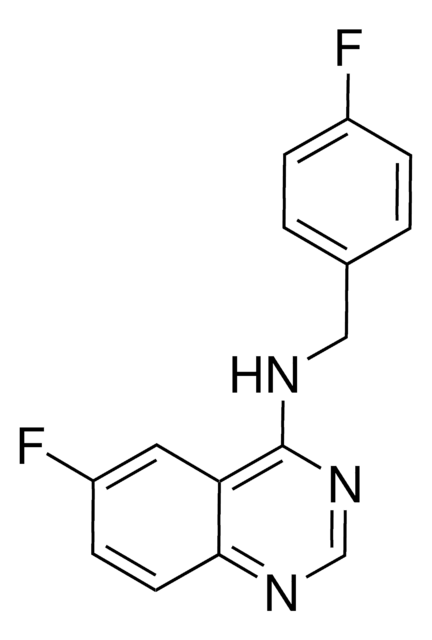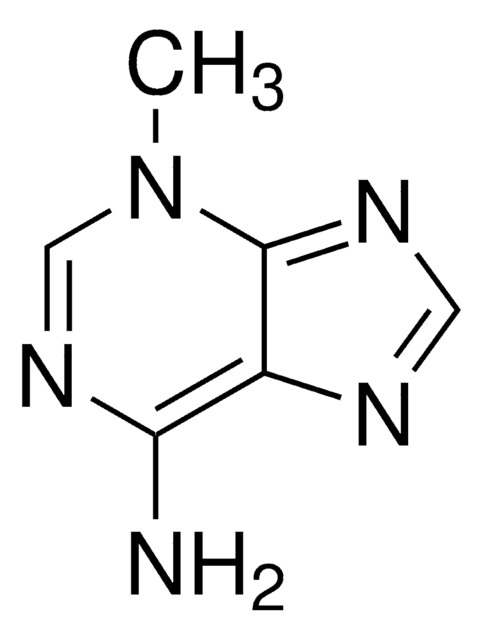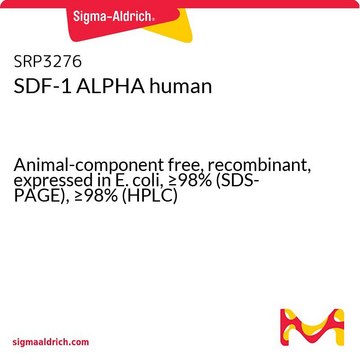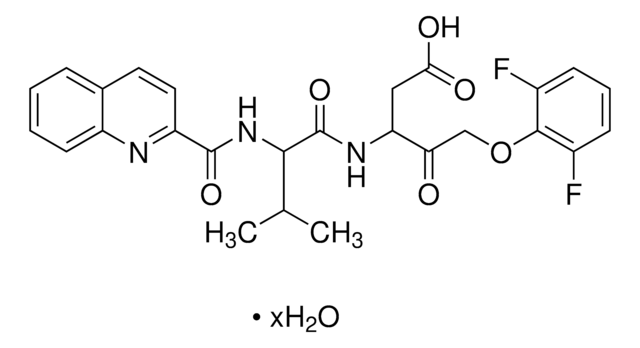Kluczowe dokumenty
SML0440
Spautin-1
≥98% (HPLC)
Synonim(y):
6-Fluoro-N-[(4-fluorophenyl)methyl]-4-quinazolinamine, C43
About This Item
Polecane produkty
Poziom jakości
Próba
≥98% (HPLC)
Postać
powder
kolor
white to beige
rozpuszczalność
DMSO: 15 mg/mL (clear solution)
temp. przechowywania
2-8°C
ciąg SMILES
FC1=CC=C(C=C1)CNC2=C3C=C(F)C=CC3=NC=N2
InChI
1S/C15H11F2N3/c16-11-3-1-10(2-4-11)8-18-15-13-7-12(17)5-6-14(13)19-9-20-15/h1-7,9H,8H2,(H,18,19,20)
Klucz InChI
AWIVHRPYFSSVOG-UHFFFAOYSA-N
Zastosowanie
- to study its effects on vascular, glial, and neuronal alterations in the oxygen-induced retinopathy mouse model
- to evaluate its pre-treatment effect on the response of canine osteosarcoma cells to doxorubicin
- to study its effects on the production of interleukin (IL)-6 by oxidatively stressed dendritic cells (OS-DCs) in Luminex assay
Działania biochem./fizjol.
Hasło ostrzegawcze
Danger
Zwroty wskazujące rodzaj zagrożenia
Zwroty wskazujące środki ostrożności
Klasyfikacja zagrożeń
Acute Tox. 4 Oral - Eye Dam. 1
Kod klasy składowania
11 - Combustible Solids
Klasa zagrożenia wodnego (WGK)
WGK 3
Temperatura zapłonu (°F)
Not applicable
Temperatura zapłonu (°C)
Not applicable
Certyfikaty analizy (CoA)
Poszukaj Certyfikaty analizy (CoA), wpisując numer partii/serii produktów. Numery serii i partii można znaleźć na etykiecie produktu po słowach „seria” lub „partia”.
Masz już ten produkt?
Dokumenty związane z niedawno zakupionymi produktami zostały zamieszczone w Bibliotece dokumentów.
Klienci oglądali również te produkty
Nasz zespół naukowców ma doświadczenie we wszystkich obszarach badań, w tym w naukach przyrodniczych, materiałoznawstwie, syntezie chemicznej, chromatografii, analityce i wielu innych dziedzinach.
Skontaktuj się z zespołem ds. pomocy technicznej

















